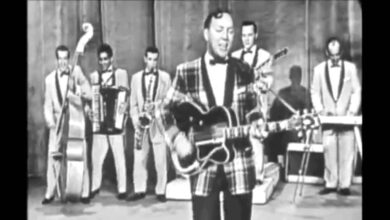Shania Twain’s ‘Any Man of Mine’ Redefines Country-Pop and Dominates the Charts in 1995
When Shania Twain released Any Man of Mine in 1995, it didn’t just climb the charts—it redefined them. As the second single from her breakthrough album The Woman in Me, the track became a career-defining hit and a landmark moment in the evolution of country music. It soared to No. 1 on the Billboard Hot Country Songs chart and cracked the Top 40 on the Billboard Hot 100, an extraordinary crossover feat at the time. Twain’s unique blend of sass, strength, and sensuality gave country a new kind of heroine, while producer and then-husband Mutt Lange brought a pop-rock polish that pushed the genre toward mainstream radio. The result was a sound that many country purists were hesitant to accept, but fans embraced in droves—changing the country landscape forever.
Born Eilleen Regina Edwards in Windsor, Ontario, Canada, Shania Twain had a journey unlike most Nashville stars. Raised in Timmins, Ontario, and enduring a childhood marked by poverty and hardship, she took on the responsibility of raising her younger siblings after the tragic death of her parents in a car crash. Her early life gave her a grounded resilience that later shaped her artistic identity. With her striking looks, commanding stage presence, and an unwavering drive, Twain stood out from the traditional female country acts of the early ’90s. She wasn’t just a voice—she was a vision of empowerment, independence, and crossover ambition.
The spark for Any Man of Mine came during sessions for The Woman in Me, where Twain and Lange aimed to craft a sound that was unapologetically bold. Shania co-wrote the song with Lange, and they built it around a strong-willed woman laying down the law on love. The lyrics spelled out non-negotiable expectations with a wink and a stomp: “Any man of mine better walk the line… treat me right, or he’s not mine anymore.” Twain later recalled that the song was a tongue-in-cheek but empowering anthem—her way of setting the record straight not just for a partner, but for an industry that often tried to box women in.
Produced by Robert John “Mutt” Lange, a legend known for his work with AC/DC and Def Leppard, the track boasted an arena-sized production. Steel guitars still shimmered in the mix, but they shared space with pounding drums, syncopated claps, and layered vocals reminiscent of rock power ballads. Twain’s vocal delivery—playful, confident, and full of attitude—was a revelation. The song even included a signature “yeehaw” and danceable stomp sequence, giving it a theatrical quality that played perfectly to live audiences. It was country, but it didn’t sound like anything country had produced before.
Upon its release, Any Man of Mine was met with immediate success. It shot to No. 1 on the U.S. Country chart and earned a Grammy nomination for Best Country Song. Meanwhile, it reached No. 31 on the Billboard Hot 100—rare territory for a female country artist at the time. The song’s video, which featured Twain dancing in a dusty barn and riding horses in fringe-covered denim, became a staple on both country and pop music channels. It was the moment when country audiences—and critics—realized they weren’t dealing with an ordinary Nashville newcomer.
The song’s impact on the industry was seismic. It broke down the walls between country and pop in a way few songs before it had dared to do. Twain’s ability to maintain traditional country roots while embracing slick, modern production challenged the rigid boundaries of the genre. In doing so, she paved the way for future female artists like Carrie Underwood, Taylor Swift, and Kelsea Ballerini—women who would also blend pop melodies with country storytelling and unapologetic self-assurance.
For Twain, the success of Any Man of Mine was transformative. It launched her into global superstardom and marked the beginning of a series of hits that would dominate the second half of the ’90s. The album The Woman in Me went on to sell over 12 million copies in the U.S. alone, and Twain’s name became synonymous with the modern woman in country music—confident, glamorous, and completely in control. Tours followed, not just in the United States, but across Europe and Australia, turning her into an international icon.
Within the country genre, Twain’s fusion of pop sensibilities sparked debate, but also inspired innovation. Her influence helped usher in a more inclusive sound—one that allowed for experimentation and crossover without sacrificing storytelling. Other artists began to emulate her formula: catchy hooks, strong production, and themes of personal empowerment. In many ways, Any Man of Mine was the opening salvo in a broader genre shift that would culminate in the 2000s with country-pop hybrids becoming commonplace on both country and mainstream charts.
The song has seen its fair share of reinterpretations. Artists like Kelly Clarkson and Lauren Alaina have covered it on live television, breathing new life into its spirited lyrics and stomp-worthy rhythm. Each version carries that same irrepressible energy, proof of the song’s lasting appeal and adaptability. Even more than 25 years later, it continues to be a favorite in karaoke bars, dance halls, and award shows.
Interestingly, Any Man of Mine came at a time when Twain was undergoing immense personal change. Her marriage to Lange was new, her career had just begun to catch fire, and she was balancing a vision that many industry veterans warned her might alienate core fans. But Twain never wavered. In fact, the risk-taking embedded in the song’s lyrics mirrored her own career at the time—she wasn’t asking for approval; she was demanding it.
Decades after its release, Any Man of Mine remains a staple of country playlists and ’90s retrospectives. It appears on countless “Greatest Country Songs of All Time” lists and is frequently cited as one of the most iconic feminist anthems in country history. Its blend of humor, swagger, and sincerity ensures its relevance to new generations of listeners who may not remember its debut but instantly understand its message.
In hindsight, the song also represents a watershed moment in music production. The blend of twangy guitars and polished studio layering became a template for the modern country sound. Twain and Lange’s work anticipated—and perhaps even dictated—where the genre would go in the following decade. From vocal styling to sonic layering, it left an indelible mark on what country-pop could be.
In later years, as Twain faced personal challenges—including a vocal cord disorder that sidelined her for years—Any Man of Mine took on new resonance. It became a symbol not just of her power in her prime, but of her resilience and comeback spirit. When she returned to the stage in the 2010s, it was often with this anthem blazing behind her.
Ultimately, Any Man of Mine endures because it didn’t just define a moment—it redefined what was possible for a woman in country music. Shania Twain didn’t ask for space; she claimed it. With a catchy beat, a head-turning video, and lyrics that still make audiences smile, the song changed her life, reshaped her genre, and gave generations of women a new anthem to stomp their boots to.



